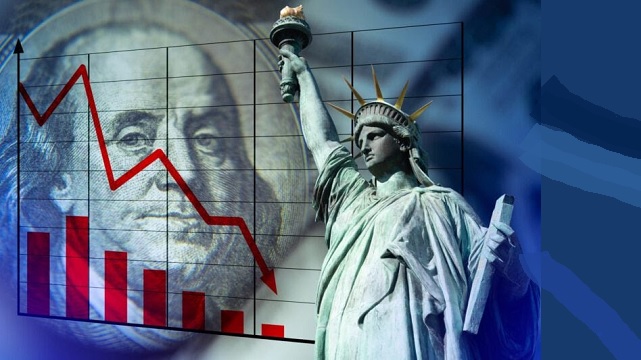Rethinking Economic Analysis and Strategy
By Amil Imani

The latest data on the Consumer Price Index (CPI) reveals contrasting trends, raising questions about the effectiveness of recent Federal Reserve actions and the potential impact on everyday Americans. As of October 2023, the annual CPI rose 3.2%, primarily due to the “fortuitous plunge” in energy prices. However, a deeper dive into the numbers exposes an inflation rate curtailed by falling energy costs. The core CPI, which sidesteps the volatility of food and energy, remained resilient, clocking in at 4.0%.
The divergence between headline and core inflation rates underscores the interplay of economic factors.
The Federal Reserve’s aggressive interest rate hikes were expected to quell inflationary pressures. Yet, the core CPI’s stubborn rise suggests a more tempered impact on the segments excluded from the headline index. Why?
Firstly, the interest rate hikes have inadvertently tilted the playing field against renewable energy technologies. As interest rates climbed, the levelized cost of electricity (LCOE) for renewables soared, jeopardizing their competitiveness vis-à-vis fossil fuels. It is a cautionary tale, reminding us that monetary policy can have unintended consequences on our pursuit of a greener future.
Higher interest rates shouldn’t impede progress toward sustainable energy – yet here we are, grappling with the repercussions on our journey towards a low-carbon economy.
The elevated interest rates provided legacy oil and gas producers a lifeline. Shielded from the onslaught of low-carbon alternatives, these traditional energy giants could maximize revenues from their aging assets. A dichotomy emerges – the Fed’s pursuit of economic stability inadvertently bolsters sectors that contribute to environmental concerns.
Are we inadvertently sacrificing our environmental goals in the pursuit of economic stability?
Moreover, the core inflation rate is not a monolithic entity; it responds to a myriad of influences. Rising shelter prices, a crucial component, witnessed a slowdown in growth due to falling hotel prices, not reductions in rent or homeowners’ equivalent rent.
It’s not just about energy and food but also the intricacies of housing costs that shape the economic narrative.
As we contemplate the repercussions of interest rate hikes, we must recognize the tangible impacts on individuals and businesses. Homeowners with mortgages face increased monthly repayments, potentially inducing financial stress. Simultaneously, enterprises grappling with higher borrowing costs might curtail investments, a potential drag on economic growth.
How are these interest rate hikes affecting you? Is your monthly budget feeling the strain, or is your business reassessing growth plans?
Furthermore, the indirect effects on the economy are equally profound. Higher interest rates could set off a wage-price spiral – a cycle of rising wages leading to higher prices, fueling further wage increases. This self-fulfilling prophecy can spawn an inflationary loop that is challenging to break.
Are we on the brink of a wage-price spiral? The interconnectivity of wages and prices can have cascading effects on our economy.
Beyond these direct and indirect impacts, such hikes can reshape expectations about future inflation and interest rates. If core inflation remains high despite rate hikes, it could dampen investment sentiments, potentially slowing economic growth.
It’s imperative to question the unintended consequences of policy decisions and their ripple effects on our collective pursuit of a prosperous and sustainable future.
The 3.2% annual increase in the US Consumer Price Index (CPI) has profound implications for the economy and individual households. Let’s dissect the potential fallouts of this uptick:
As a measure of the average price change for a basket of goods and services, the CPI signifies an augmented cost of living. This escalation strains household budgets, particularly those reliant on fixed or low incomes. The 3.2% CPI increase amplifies the financial challenges faced by everyday consumers, raising pertinent questions about the adequacy of income levels in the face of rising prices.
How does the increased cost of living impact your household budget? Are you making ends meet with the recent price surge more challenging?
Historically, the Federal Reserve responds to mounting inflation by raising interest rates. While this strategy proves effective, it concurrently amplifies the cost of borrowing, potentially slowing economic growth. The ripple effect extends to the stock market, where higher interest rates render bonds more attractive than stocks, influencing investment decisions and market dynamics.
How are you adjusting your investment strategy in response to potential shifts in interest rates? Are higher borrowing costs affecting your financial decisions?
If wages fail to keep pace with inflation, workers’ real purchasing power diminishes, culminating in a decline in the standard of living. This scenario poses challenges for individual households and introduces the specter of social unrest and heightened pressure on employers to reassess wage structures.
Have you noticed a stagnation or decline in your real purchasing power? Are calls for wage increases becoming more pronounced in your workplace or community?
The interplay between businesses passing on higher costs to consumers and anticipating prolonged high inflation can set the stage for a self-sustaining cycle known as ‘sticky’ inflation. If left unchecked, this phenomenon poses a formidable challenge for central banks as breaking the cycle becomes increasingly complex.
Do you perceive a sustained trend of rising prices, and how does this impact your expectations for future economic conditions?
The upward push of inflation can translate into elevated costs for servicing government debt, particularly if it leads to higher interest rates. This potential uptick in government expenditure on debt servicing could exert budgetary pressures, prompting government service cutbacks or tax increases.
Are you concerned about the potential repercussions of increased government debt servicing costs on public services and taxes?
While a 3.2% increase in the CPI may not be deemed excessively high by historical standards, its repercussions resonate significantly throughout, and the role of interest rates cannot be underestimated. Their direct and indirect impact is felt across various sectors and individual lives, shaping the contours of our economic reality.
How confident are you in the economic outlook? Are you adjusting your investment strategy based on expectations of future inflation?
So, are we treading the right path, or do we need to recalibrate our economic strategies?

This article is courtesy of DrRichSwier.com, an online community of citizen journalists, academics, subject matter experts, and activists to express the principles of limited government and personal liberty to the public, to policy makers, and to political activists. Please visit DrRichSwier.com for more great content.

